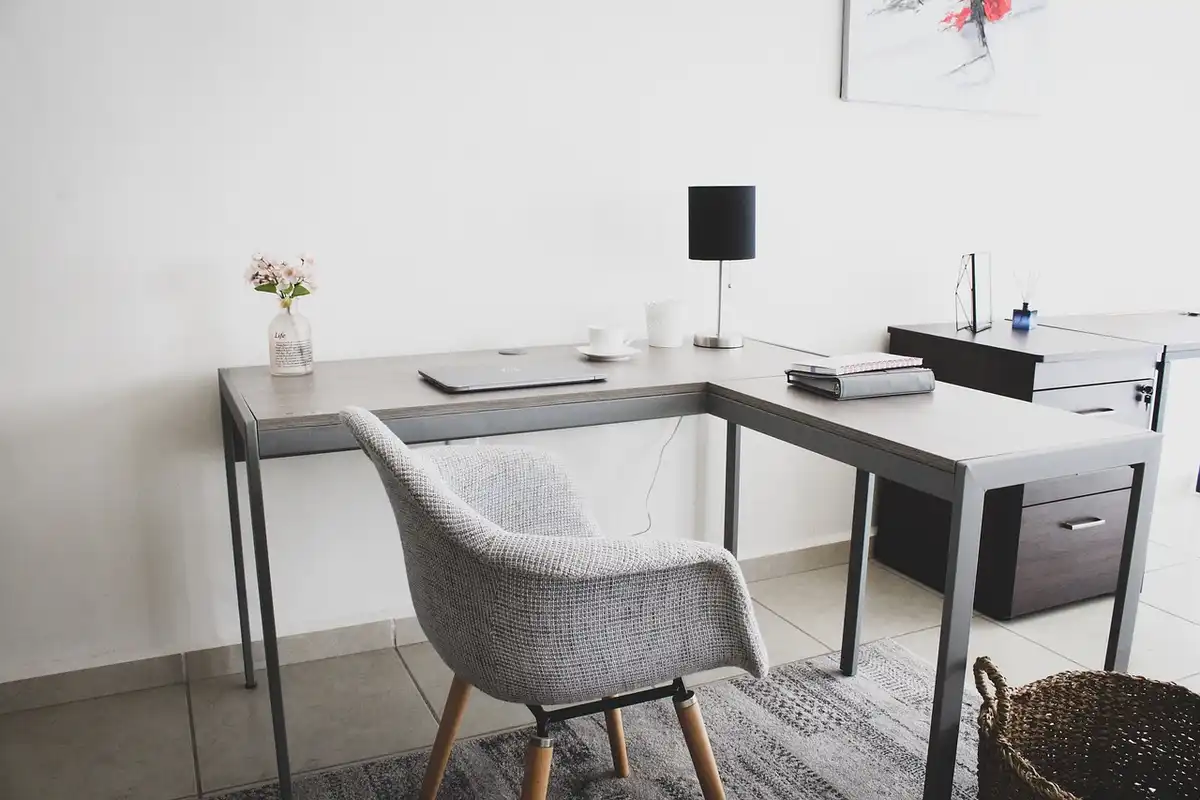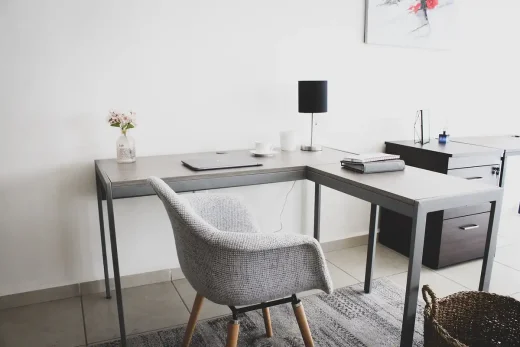Essential tips for organising your home office efficiently, Tips, WFH Advice, Pandemic Working Help
Essential Tips for Organising Your Home Office Efficiently
8 November 2024
As remote work continues to gain traction, creating an efficient and well-organised home office has become crucial for many professionals. With 12% of workers in Great Britain now working exclusively from home and an additional 26% adopting hybrid arrangements, the need for a functional workspace that promotes productivity is more relevant than ever. A thoughtfully organised home office not only enhances work performance but also contributes to overall well-being, making it easier to navigate the demands of both professional and personal life in a remote setting. This article will guide you through essential tips to optimise your home office, helping you create a space that supports your work-from-home lifestyle effectively.
Choosing the Right Furniture for Productivity
Selecting the right furniture is the foundation of an efficient home office. Start with a desk that fits your space while providing ample room for your computer, accessories, and other essentials. Ergonomics should be a priority; a good chair with proper lumbar support can make a significant difference in comfort, especially during long workdays.
Consider the height of your desk and chair in relation to your monitor. Your screen should be at eye level to prevent neck strain, and your feet should rest flat on the floor or on a footrest. If space is limited, look for multifunctional furniture, such as desks with built-in storage or foldable options that can be tucked away when not in use.
Decluttering Your Desk: Must-Have Storage Solutions
A cluttered desk can be a major distraction, hindering productivity and causing unnecessary stress. To maintain a clean and organised workspace, invest in effective storage solutions. Drawer organisers, desk trays, and wall-mounted shelves can help keep your essential items within reach without overcrowding your workspace.
Think about categorising your supplies and papers. For instance, use different trays or drawers for documents you need daily versus those you reference occasionally. Labelling these compartments can further streamline your organisation, making it easier to find what you need when you need it.
Additionally, consider going paperless whenever possible. Digital tools can help reduce the physical clutter on your desk, and with options like cloud storage, you can access your files from anywhere without the need for bulky filing cabinets.
Optimising Your Workflow with Smart Office Layouts
The layout of your home office plays a crucial role in your overall productivity. A smart office layout is one that allows for easy movement and access to the tools you use most frequently. Start by positioning your desk near natural light, as daylight can boost mood and energy levels.
If your work involves frequent meetings or calls, ensure your layout includes a quiet, dedicated space for these activities. This could be as simple as setting up a corner with a comfortable chair and a small table for notes and a cup of coffee.
Create zones within your office for different tasks. For example, designate a specific area for computer work, another for reading or brainstorming, and a separate space for storage. This physical separation can help you mentally switch gears, enhancing focus and efficiency.
Incorporating Technology for Seamless Organisation
Technology is a powerful ally in maintaining an organised home office. With the right tools, you can streamline your work processes and reduce physical clutter. Start by integrating digital tools that simplify daily tasks. For instance, using a compress PDF tool can save space on your computer and make file sharing easier. A PDF compress tool helps in reducing the file size of important documents without compromising quality, which is especially useful when working with large files that need to be emailed or uploaded.
A reliable PDF compressor is essential for keeping your digital files manageable and organised. By compressing files, you not only free up storage space but also ensure that your documents are easy to manage and share. This can be particularly beneficial in a home office setting, where storage might be limited.
Beyond file management, consider other tech solutions like task management apps, which can help you keep track of your to-do list, appointments, and deadlines. Cloud storage services are also indispensable, allowing you to access your files from any device, anywhere. By incorporating these technologies into your home office, you can maintain a seamless workflow and stay organised with minimal effort.
Creating a Comfortable and Productive Atmosphere
A well-organised home office is not just about efficiency; it’s also about creating a space where you feel comfortable and motivated. Start with lighting. Natural light is ideal, but if that’s not possible, invest in good-quality artificial lighting. A combination of ambient lighting and task lighting, such as a desk lamp, can help reduce eye strain and create a warm, inviting atmosphere.
Personalisation is key to comfort. Add elements that make the space feel like your own, whether it’s artwork, plants, or a favourite mug. However, be mindful of clutter. Keep personal items to a minimum and choose pieces that complement the overall aesthetic of your office.
Temperature control is another factor that can influence productivity. Ensure your workspace is neither too hot nor too cold, and consider a small fan or heater to maintain a comfortable temperature throughout the day.
Managing Cables and Wires to Reduce Visual Clutter
Cable management is often overlooked but is vital for maintaining a clean and organised workspace. A tangle of wires not only looks messy but can also be a safety hazard. Start by using cable organisers, such as clips, ties, or sleeves, to bundle and hide cords. Label your cables to make it easier to identify them, especially when you need to unplug something quickly.
For devices that you use less frequently, consider wireless alternatives. Wireless keyboards, mice, and printers can significantly reduce the number of cables on your desk. If wireless isn’t an option, arrange your cables so that they run along the back of your desk or along the floor, out of sight.
Essential Tools for Staying Organised and Focused
To maintain a high level of organisation, consider incorporating essential tools into your daily routine. A good planner, whether digital or physical, can help you keep track of tasks, deadlines, and appointments. Sticky notes or a whiteboard can be useful for jotting down quick reminders or ideas.
Time management tools, such as a timer or a productivity app, can help you stay focused during work hours. These tools can break your workday into manageable chunks, allowing you to tackle tasks efficiently without feeling overwhelmed.
Finally, regular maintenance is key. Take a few minutes at the end of each day to tidy up your workspace, file away papers, and prepare for the next day. This small effort can make a big difference in keeping your home office organised and ready for work.
A well-organised home office is essential for maintaining productivity and reducing stress, especially in the growing trend of remote work. With the right furniture, smart layouts, and thoughtful integration of technology, you can create a workspace that not only supports your professional needs but also enhances your overall work-from-home experience. As remote work continues to rise, with 98% of remote workers expressing a desire to continue working remotely for the rest of their careers, having a well-structured and organised home office is more important than ever.
Comments on this Essential Tips for Organising Your Home Office Efficiently article are welcome.
Edinburgh Architecture
EICC – Additional Spaces Facility – Project
EICC Additional Spaces Facility
Rowanbank Gardens in Corstorphine
image courtesy of architecture office
Rowanbank Gardens Edinburgh Housing
Comments / photos for the Essential Tips for Organising Your Home Office Efficiently page welcome


